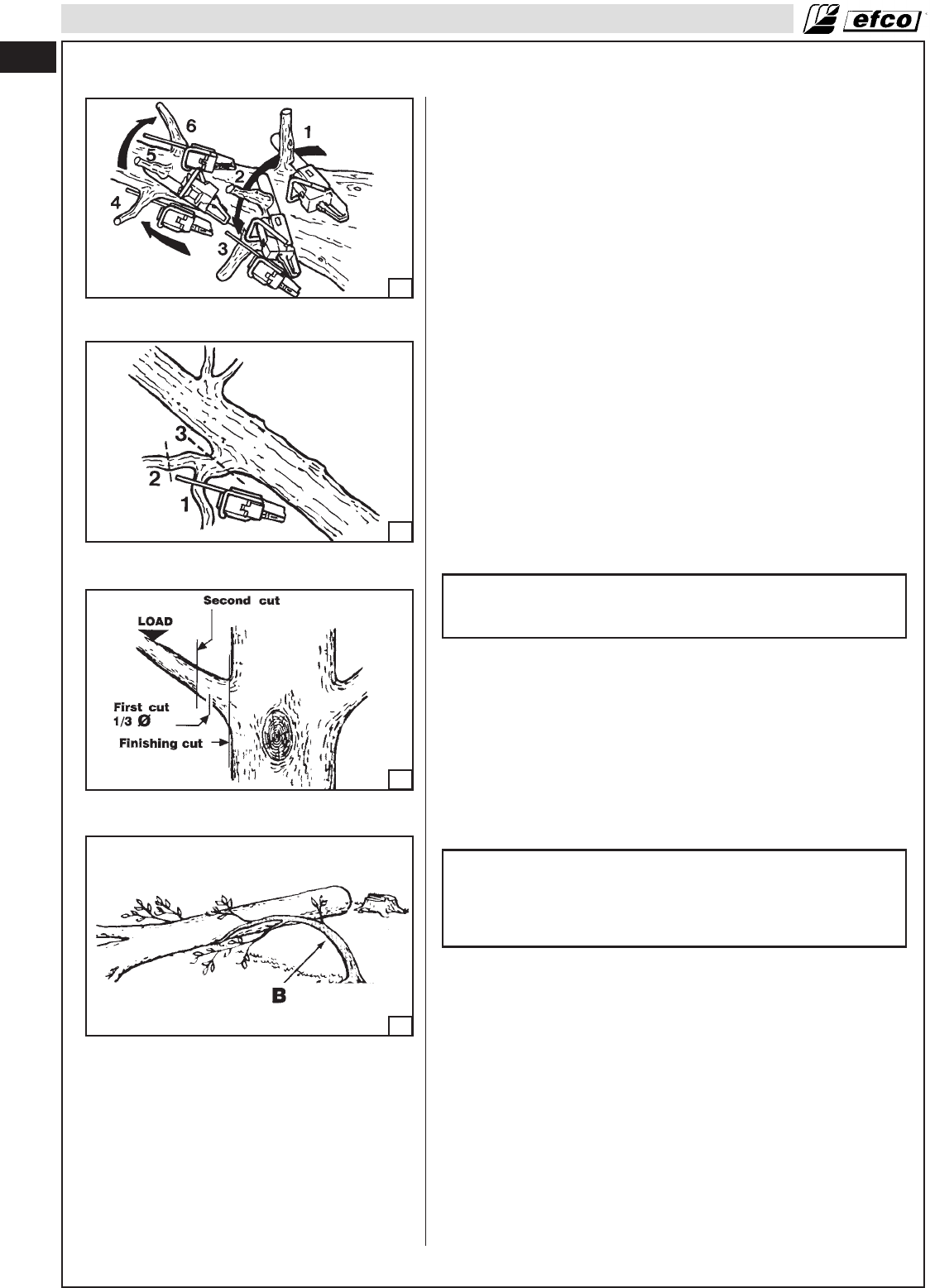
28
en
OPERATION
Limbing Operation (Fig. 72-73)
• Always limb a tree after it is cut down. Only then can limbing be
done safely and properly.
• Leave the larger limbs underneath the felled tree to support the
tree as you work.
• Start at the base of the felled tree and work toward the top, cut-
ting branches and limbs. Remove small limbs with one cut.
• Keep the tree between you and the chain. Cut from the side of
the tree opposite the branch you are cutting.
• Remove larger, supporting branches with the cutting
techniques described in BUCKING WITHOUT A SUPPORT.
• Always use an overcut to cut small and freely hanging limbs.
Undercutting could cause limbs to fall and pinch the saw.
Pruning Operation (Fig. 74)
• When pruning trees it is important not to make the flush cut
next to the main limb or trunk until you have cut off the limb
further out to reduce the weight. This prevents stripping the
bark from the main member.
• Underbuck the branch 1/3 through for your first cut, your
second cut should overbuck to drop the branch off.
• Now make your finishing cut smoothly and neatly against the
main member so the bark will grow back to seal the wound.
WARNING: If the limbs to be pruned are above chest
height, hire a professional to perform the pruning.
Springpoles
A springpole (B, Fig. 75) is any log, branch, rooted stump, or
sapling which is bent under tension by other wood so that it
springs back if the wood holding it is cut or removed. On a fallen
tree, a rooted stump has a high potential of springing back to the
upright position during the bucking cut to separate the log from the
stump. Watch out for springpoles. They are potentially dangerous.
WARNING: Springpoles are dangerous and could
strike the operator, causing the operator to lose con-
trol of the chain saw. This could result in severe or
fatal injury to the operator.
ƽ
ƽ
72
73
74
75


















